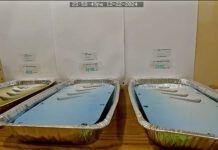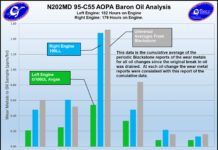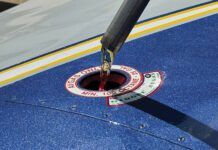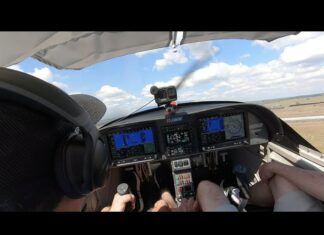When EAGLE (Eliminate Aviation Gasoline Emissions by 2030) was formed in November 2021 it trumpeted that its triumphant march to providing an unleaded high-octane avgas to the world by 2030 was going to be the most transparent “industry/FAA” process ever.
Interestingly, EAGLE’s predecessor, PAFI (Piston Engine Aviation Fuels Initiative), said the same thing when it was formed in 2014, and then failed to deliver on either a fuel or transparency before collapsing in confusion in 2019.
So, how is EAGLE doing? Not great, in my view.
During 2023 Aviation Consumer reported and opined frequently on EAGLE’s foot-dragging, its apparent kowtowing to the 100LL producers and distributors and its determination to hang onto the profits generated by 100LL avgas despite its R&D being funded by taxpayer money. We recommended renaming EAGLE after the flightless bird KIWI (Keep Industry Waiting Indefinitely), especially after one of the EAGLE members said that we’d have unleaded avgas by the end of 2030 and not before.
EAGLE also seems to have a serious problem with its promised transparency. About a month ago, word flashed around the street (or what passes for “the street” in the aviation world) that one of EAGLE’s three remaining candidate fuels destroyed an engine during a standard 150-hour FAA endurance test. No surprise. The fuel, sponsored by a partnership of Phillips 66 and Afton Chemical, uses a metallic octane enhancer, manganese (formulated as a product called MMT). Unlike tetraethyl lead, there is no scavenger, so it leaves spark plug deposits that are known to cause destructive pre-ignition.
Strangely, that’s not on the EAGLE website, nor was any public announcement made. Hey, EAGLE, when one of your three fuels fails a basic screening test, it’s a big deal. We the taxpayers should have been alerted. The group’s fiduciary responsibility is to us, the taxpayers. Transparency.
What’s even more explosive for us in the aviation community is that the remaining two EAGLE candidate fuels, Lyondell/VP Racing and Swift Fuels UL100R, contain— from what we can tell from public information such as patent filings—oxygenated ETBE (Ethyl Tertiary Butyl Ether), an oxygenate made from ethanol. Remember how we’ll ethanol does in aircraft fuel systems? From what we can tell, Swift Fuel uses as much as 25 percent ETBE and Lyondell/VP Racing uses at least 5 percent ETBE. Keep in mind that Lyondell/VP Racing announced publicly at Oshkosh that its fuel can’t be used in all aircraft without unspecified engine mods.
OK, class, what state is currently clamoring for unleaded avgas and whose individual airports are banning 100LL? That’s right, California.
However, there’s just one small problem: The way we read California statutes, ETBE in fuel for self-propelled vehicles is illegal. We have seen no exclusions or exceptions for aircraft.
EAGLE, step one: It’s time for you to be transparent.
How in the bloody world did you allow a fuel to be submitted for testing that is illegal for use in one of the biggest general aviation states? Please show us your legal research that indicates that ETBE can be used in avgas in California. We’re certainly not perfect, but we haven’t been able to find anything that allows its use. We want unleaded avgas to succeed, and this misstep continues to make it appear that EAGLE doesn’t want it happening because so many of its members are beholden to the 100LL oil industry and its stakeholders.
Subset to step one: EAGLE, explain to us mere pilots who have spent years carefully using non-ethanol mogas in our smaller airplane engines how we can use an ethanol-based additive without significant modification to our fuel systems and engines. Do you have anyone competent to administer the most basic of screening for candidate fuels for viability? How come all of this is not on your website?
By the way, EAGLE, what are your candidate fuel test protocols? For engine durability? For flight testing? Detonation testing for EAGLE fuels and engines? Why aren’t they on your website?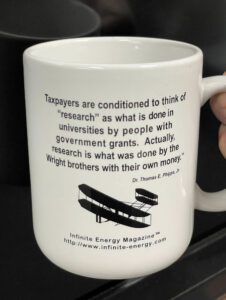
EAGLE, you, PAFI and your predecessors have been at this since 1988. Millions of taxpayer dollars have been provided to you and you can’t seem to even come up with a candidate fuel that passes basic operational screening and/or doesn’t have illegal or engine-trashing additives?
As a taxpayer, I’m livid.
Background
Let’s review the bidding.
EAGLE was formed in late 2021 to develop a fleet-wide, drop-in unleaded avgas by the end of 2030. In 2022, when then-FAA administrator Steve Dickson announced EAGLE, he neglected to state that two unleaded fuels had already been approved: Swift Fuel’s UL94, for low-compression engines, and GAMI’s G100UL avgas. G100UL went on, within nine months, to be FAA-approved as a fleet-wide, drop-in replacement for 100LL. It is compatible with 100LL (you can mix them in your fuel tank and the storage tank at the airport). It is approved for every existing spark-ignition piston engine and every associated airplane found anywhere in the FAA engine and airplane databases without modification to the engines or aircraft (other than affixing routine placards).
During his announcement, Dickson demonstrated that the “not-invented-here syndrome” was fully mature at EAGLE that day. Since G100UL wasn’t a fuel entered into EAGLE’s in-house program it was a persona non grata.
As we pointed out in our July 2023 issue, EAGLE and its members immediately claimed that G100UL avgas was unsatisfactory and—according to at least one EAGLE member—could not legally be sold without approval via EAGLE’s preferred route—obtaining an American Society for Testing and Materials (ASTM) spec. According to EAGLE’s mouthpieces, even though EAGLE was associated with the FAA, an FAA fuel approval was meaningless and worthless without an ASTM blessing.
It took a while to kill that snake. We pointed out that there are two equally valid ways of getting an aviation fuel approved for use in aircraft: You can start out and obtain an ASTM spec and then, with more FAA testing, get an FAA approval. Or you can get a spec approved directly by the FAA as part of the required FAA testing. The initial disinformation smoke has cleared and even the most vociferous of EAGLE members have recently admitted that both avenues are equally valid.
The Big Move
That’s where things lay until AOPA’s head, Mark Baker, who had been a co-chair of EAGLE, quietly left his position at EAGLE. He was replaced by an outspoken and seemingly anti-G100UL member of EAGLE, the president of the National Air Transportation Association (NATA). It is a collection of FBOs and support companies that are, in my opinion, beholden to maintaining the 100LL gravy train as long as possible.
What spoke volumes was that Mark Baker immediately made a much-publicized flight in a Beech Baron in which one engine was powered by 100LL and the other by G100UL. As an aside, we’re hoping to fly that aircraft soon and report on the results.
Actions speak louder than words. Baker and AOPA have acted and spoken.
G100UL has been fully approved, it works and it needs to be available now, especially at airports in California and Colorado banning or considering bans on 100LL.
EAGLE, your work is done. Please consider one of the great class acts of aviation: When Charles Lindbergh flew solo from New York to Paris he knew that he wasn’t qualified to receive the $25,000 Orteig prize offered for making that flight because it hadn’t been 60 days since he’d given notice that he was competing.
After he was successful, Raymond Orteig petitioned the trustees of his prize to recognize reality, waive the unmet requirement and give Lindbergh the prize. They did.
EAGLE, it’s time for you to recognize reality. G100UL avgas works. It is a fleet-wide, drop-in replacement for 100LL and is compatible with 100LL. Get rid of your not invented here prejudice; recognize your fiduciary obligation to the taxpayers; make G100UL an EAGLE fuel; declare victory and disband.
EAGLE, in 1653 Oliver Cromwell said words that he didn’t realize would apply to you but clearly do: “It is not fit that you should sit here any longer. You have sat here too long for any good you have been doing lately … In the name of God go.”


